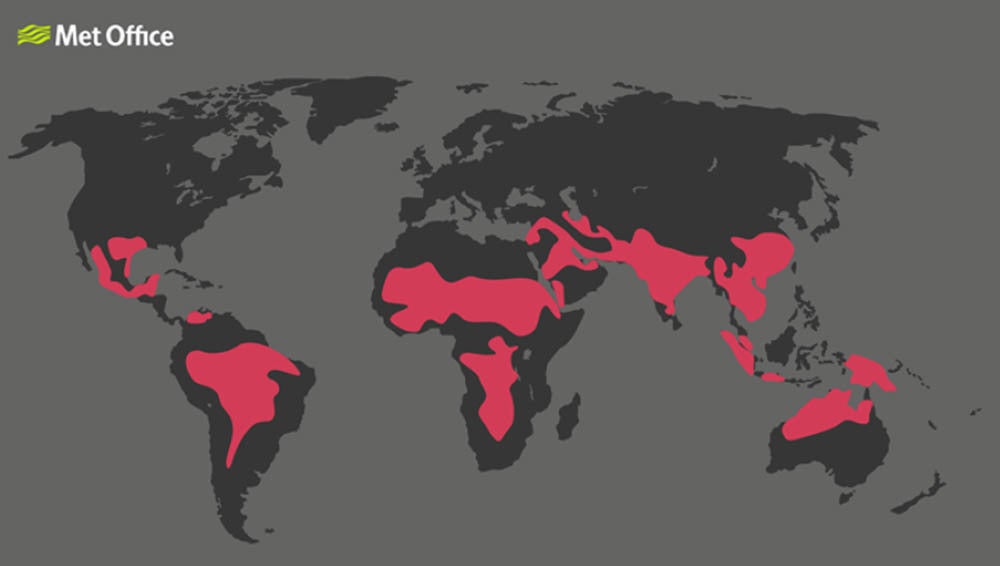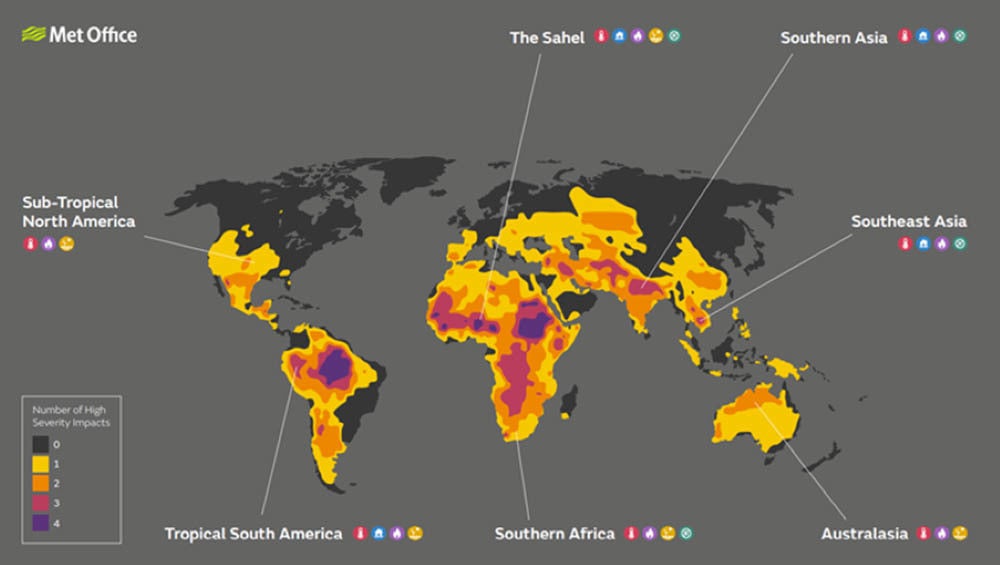One billion ‘face dangerous heat if warming hits 2C’
If warming hits 4C, half of the world’s population could face potentially lethal levels of heat stress
One billion people could be facing deadly levels of heat stress if global warming reaches 2C above pre-industrial levels, new research has found.
Heat stress is a dangerous combination of heat and humidity, that is determined through a wet bulb globe temperature (a measurement that takes into account temperature, humidity, wind speed and solar radiation) of above 32C. Those impacted by heat stress can experience heat exhaustion, with symptoms of heavy sweating, rapid pulse, and potentially additional strain on the heart and other organs. Those with pre-existing conditions and the elderly are at the greatest risk, as well as physical labourers who work outside.
Currently, 68 million people around the world are affected by heat stress. But a group of academics and Met Office scientists estimate that under a 2C scenario the number of people living under conditions of heat stress could increase 15-fold.
Dr Andy Hartley, the Met Office’s climate impacts lead, said: “Currently the (heat stress) metric is met in several locations, such as parts of India, but our analysis shows that with a rise of 4C, extreme heat risk could affect people in large swathes of most of the world’s continents”.
Under these runaway global warming conditions, the research also found that roughly half of the world’s population would be living with heat stress.

The new analysis developed heat stress maps that project these future impacts of climate change under the two different scenarios, while also examining the impacts of river flooding, wildlife risk, drought and food insecurity.
Dr Andy Wiltshire, head of earthy system and mitigation science at the Met Office, added: “Of course, severe climate change will drive many impacts, and our maps show that some regions will be affected by multiple factors.
“Perhaps unsurprisingly, parts of the tropics are most affected with countries like Brazil and Ethiopia potentially facing impacts from four of the hazards.
“Rapid emission reductions are required if we are to avoid worst consequences of unmitigated climate change.”

According to the study, going into the Cop26 climate summit, under countries’ carbon emission reduction pledges, the earth was on track to reach 2.7C of warming above pre-industrial levels.
But during the first week of the negotiations, US climate envoy John Kerry revealed that if the pledges made so far during the negotiations were upheld, humanity would be on course for 1.8C rising, according to the International Energy Agency.
“This new combined analysis shows the urgency of limiting global warming to well below 2C,” Prof Richard Betts, who led the study, said.
“The higher the level of warming, the more severe and widespread the risks to people’s lives, but it is still possible to avoid these higher risks if we act now,” he added.
The research was conducted by an international team of scientists in the EU-funded Helix project, and led by the University of Exeter. The Met Office, on behalf of the UK government, was responsible for analysing where the most severe impacts would overlap.
The study follows another report by the Met Office, published last week, which found that Europe could see heatwaves of 50C every year by the end of the century if urgent action is not taken to cut emissions, with temperatures rising by around 2.7C above pre-industrial levels by 2081 to 2100.
Join our commenting forum
Join thought-provoking conversations, follow other Independent readers and see their replies
Comments
Bookmark popover
Removed from bookmarks